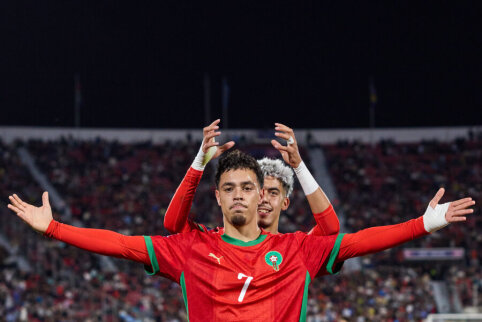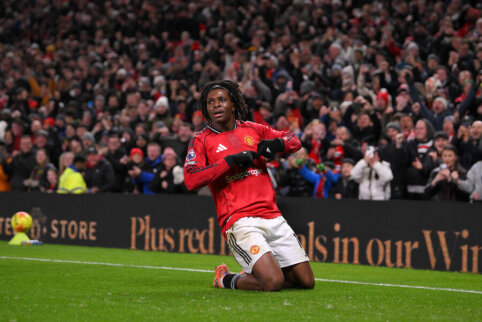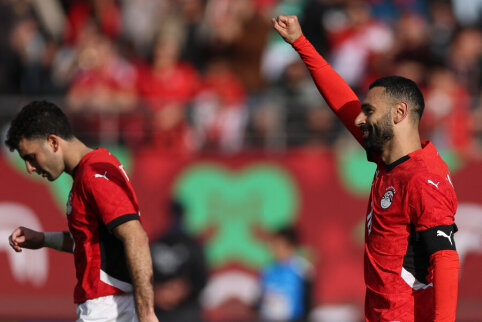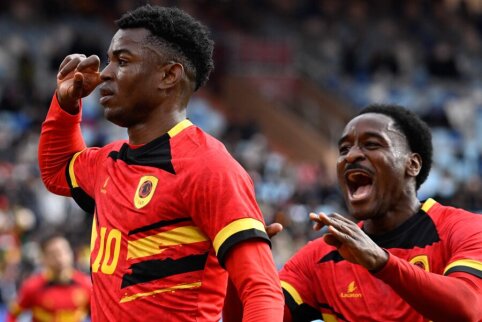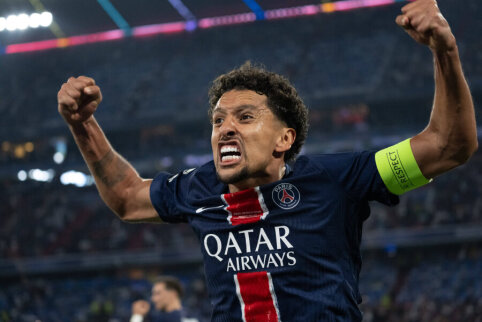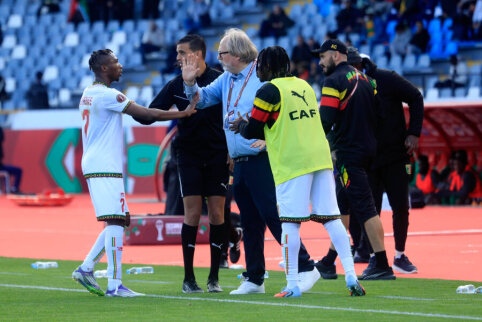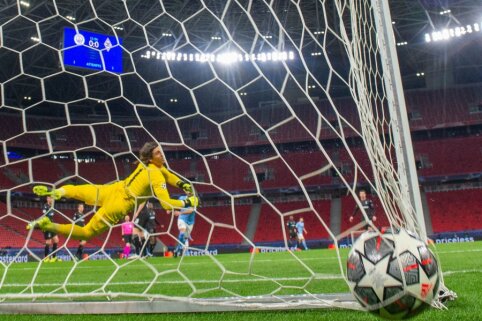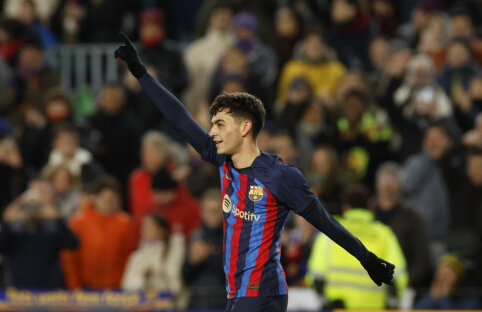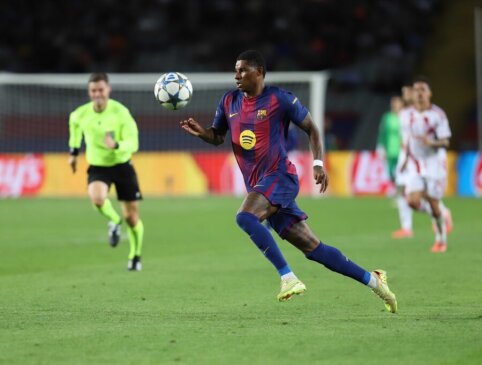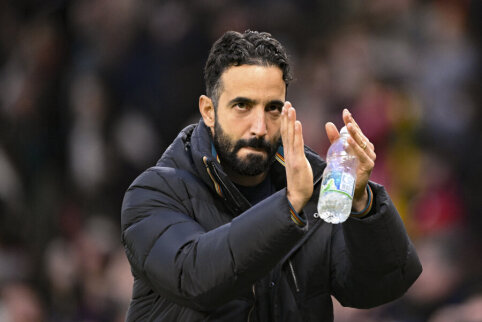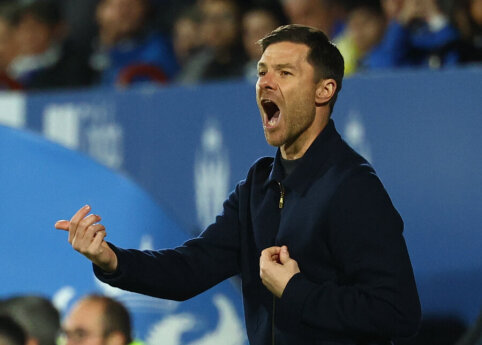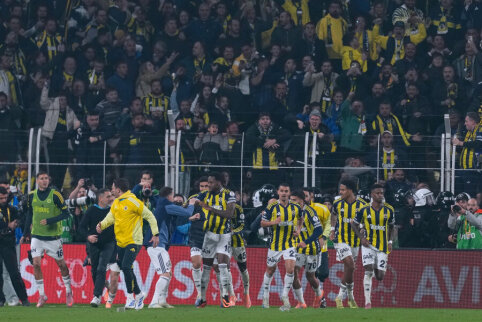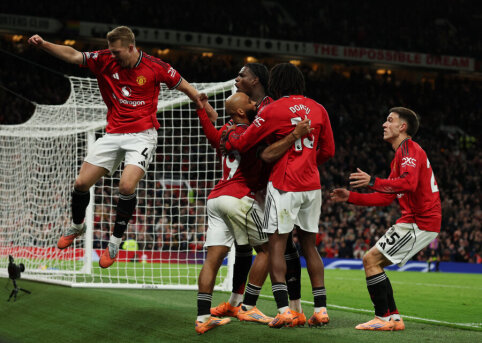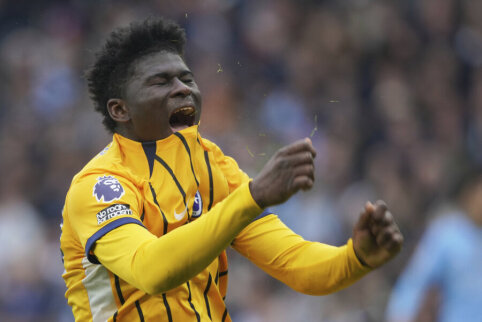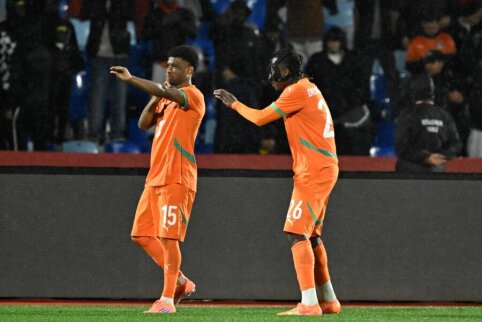 © EuroFootball.com
© EuroFootball.com
We publish an article by a person named Vilhelmas Negerovė about the deplorable state of stadiums in Lithuania and ways to solve this problem.
On March 29, 2012, there will be Euro 2012 qualifying matches between Lithuania and Spain. Regardless of the outcome of the matches, Lithuania will either be ashamed or very ashamed.
The matches will take place at Darius and Girėnas Meadow in Kaunas, Lithuania, which does not have a single normal football stadium.
The Spaniards once played in Lithuania (in October 2004) and did not like it. Not so much because of the result (the match ended in a 0-0 draw), but because of the playing conditions.
At that time, the match took place at the Žalgiris Stadium in Vilnius, reminiscent of the Battle of Žalgiris. The condition of the stadium disgusted the Spaniards so much that, not wanting to risk their health, they refused to train on the "rice field."
Despite their misfortune, the Spaniards were still forced to play there. The home ground gave the Lithuanians not only a psychological advantage but also a technical one: they memorized all the holes on the field and were ready for the rolling ball to suddenly change direction.
The Spanish press did not remain silent and caused a scandal. Mocking comments about the deplorable state of Lithuania's football stadiums heard throughout the world tarnished Lithuania's image, but since it was never high, no one noticed it.
This year's Spanish national team has only five players from the 2004 team. Those five players could not persuade the entire team, so they will be forced to visit Lithuania for the second time. Carles Puyol, a member of the Spanish national team with the best memory and brightest mind, is currently simulating an injury and is happy to stay in his homeland.
Where will the Lithuanian national team emigrate to?
The scandal that happened seven years ago will be reminded on Tuesday. Today's Darius and Girėnas Stadium is no better than the former Žalgiris stadium.
According to UEFA's amended stadium rules approved last year, official international team matches can only take place in stadiums with a status no lower than 3 UEFA category. No stadium in Lithuania has this status.
To make the D&G stadium meet UEFA's requirements, it would take just 4 million litas - 42 times less than the cost of the Žalgiris arena (where basketball is played) and 92 times less than planned to stuff into the Palace of the Grand Dukes (where no useful function is performed at all). However, the planned reconstruction of the D&G stadium is indefinitely postponed.
It is highly likely that UEFA will announce that the Lithuanian national football team cannot play in Lithuania because it is dangerous for the health of players and spectators. Let them play all matches away or rent a decent stadium in Latvia or Poland. Poland, together with Ukraine, hosting the 2012 European Football Championship, certainly has stadiums.
The fact that the Lithuanian national team may have to emigrate from Lithuania was discussed seven years ago, but this time it could become a reality. International requirements for stadium quality continue to rise, while the quality of Lithuanian stadiums continues to deteriorate.
STADIUMS IN LITHUANIA: GOOD, BAD, AND RIDICULOUS
In a basketball country, there is no place for football stadiums. In Lithuania, football fans can only enjoy the legacy of the Soviet era and occasional miracles.
Good
The Vėtra Stadium in Vilnius and the Sūduva Stadium in Marijampolė are the only football stadiums built in Lithuania after the restoration of independence. The stadiums can accommodate approximately almost 6 thousand and just over 6 thousand spectators, respectively.
By European standards, these are microscopic stadiums, so declaring one of these stadiums as the main stadium of the Lithuanian national team would be totally inadequate. For comparison, the Skonto Stadium in Riga, built 11 years ago, accommodates 10,000 spectators, which is already a level.
However, in 2008 and 2009, the Lithuanian national team played three matches at the Sūduva stadium (World Cup qualifiers). Austrian, Romanian, and Serbian viewers watching the broadcasts probably thought that the stingy locals prefer to watch matches on their neighbor's TV: the Sūduva stadium has only one large stand, which is not captured by the cameras, so television viewers think that the matches are taking place almost without spectators in an enclosed field.
If the reconstruction of the D&G stadium is not completed, the Lithuanian Football Federation (LFF) suggests that maybe the few million should be spent on the Vėtra stadium to give it the necessary UEFA status and become the main stadium of the Lithuanian national team. In other words, Lithuanian football would be represented by a stadium with 6 thousand seats.
The trend towards hosting international football matches in stadiums with half the capacity of basketball arenas is favorable for other Lithuanian cities: Klaipėda, Šiauliai, Panevėžys, and Alytus nurture realistic hopes of hosting the Lithuanian national team. Since there is no serious competitor (a stadium that would be unequivocally considered national), making the poor stadium the best in the country can be relatively cheap.
Stadium reconstructions in Lithuania look like this: bright plastic seats, the field is leveled with rollers, and local residents are asked to remove their cows grazing in the stadium. This temporarily calms down international experts, and they grant the stadium a license for another year.
By raising the minimum requirements for the condition of the stadiums, all Lithuanian stadiums immediately end up offside, and cosmetic renovations start all over again. But at the same time, several stadiums find themselves in a similar starting position and have equal opportunities to become the best in Lithuania.
Bad
In the largest stadium in Lithuania - the Vilnius Žalgiris Stadium - 15,000 spectators can fit. This historical Lithuanian stadium and football symbol currently serve only the function of raising nostalgia.
Built by German prisoners of war (not in the Battle of Žalgiris, but during World War II) and now reaching retirement age (this year the stadium will turn 63), the stadium is currently closed and prepared for demolition.
The Žalgiris stadium, Vilnius Concert and Sports Palace, and the area around the stadium (in total 13 hectares) belong to the Ukio Bank Investment Group (UBIG), which in turn belongs to Vladimir Romanov, who owns everything with the Žalgiris name. Sometime in the future, the area should have a modern complex dedicated to culture, sports, leisure, and business, with a 10,000 seat stadium in the front.
When this will happen is unclear because football projects in Lithuania progress slower than grass grows in stadiums. The New Vilnius Football Complex project, started in 2004, is currently dormant. Bringing back even larger projects from winter sleep ends in scandals and lying on the other side sleeping further.
Ridiculous
In Vilnius, on the Šeškinė Hill bump, in the shade of the Acropolis, the National Stadium, called either by the age of construction or by Lithuania's shame, which means the same thing. Instead of a multi-purpose stadium with covered stands and 25,000 seats, providing spiritual and material benefit to the state, the current state of the stadium is only preserved concrete rubble.
Started in the times of Gorbachev, in 1987, the stadium first died in 1993. In 2007, it rose from the dead, but only to die again a year later. The biggest scandal is that no one was authorized to revive the stadium at all: the Supreme Court found that the construction contract was signed unlawfully and is null and void. As is common in Lithuania, the nullity of the contract did not prevent the contractors from getting rich.
The overall plan of the National Stadium was supposed to be about the size of two Grand Duke's Palaces. A multi-purpose building must cost more than a building without any purpose, so everything is understandable here. But historical data shows that the Egyptians built the Great Pyramid of Cheops in less time and with a smaller budget.
The stadium was supposed to be opened by the 2009 Song Festival. It is now considered reasonable to build the National Stadium by the 2000th anniversary of the name of Lithuania. Experts predict that by then, football will have changed beyond recognition: referees will be allowed to review video replays of disputed moments.
D&G - THE BEST WE HAVE
Currently, the role of the national football stadium is played by the Darius and Girėnas stadium in Kaunas, mentioned several times. This is the first sports stadium in Lithuania, opened in 1925. The D&G stadium was last renovated in 1998 and 2005. Currently, the stadium does not meet international requirements.
For the upcoming match between Lithuania and Spain next week, permission to hold the match was granted at D&G Stadium on an exceptional basis, with LFF President Liutauras Varanavičius promising to sexually satisfy UEFA President Michel Platini.
According to the most reliable online source Wikipedia, the D&G stadium can accommodate either 8,248 or 9,180 spectators. Although the stands are arranged slightly differently than at the Sūduva stadium, there are still many open areas with windows to nature. Foreigners are amazed by the untouched primitive forests around the D&G stadium, where bears and werewolves roam.
Problems
Like most Lithuanian stadiums, the main problem with the D&G stadium is the pitch. Lithuanians are an agricultural nation and use football pitches to grow potatoes (matches are held in those years when the pitch is fallow). A ball kicked directly on this pitch bounces unpredictably, changes direction suddenly, and stops when it lands in a deeper hole.
The D&G stadium is suitable only for discus throwing. It is not surprising that in 2000, Virgilijus Alekna achieved the second-best result of all time in the world there (73.88 m). By the way, this happened because at that time, there were both football matches and discus throwing taking place at the stadium, and a discus hitting the head of a footballer, bounced several meters further than it should. As often happens in Lithuania, the referee of the discus throw happened to be Alekna's brother-in-law, so he counted the result.
At the moment, the quality of the D&G stadium's pitch is especially relevant due to the matches taking place in March when the snow has not yet melted in Lithuania, and it is still wet. Therefore, it is quite likely to see Spanish footballers clambering awkwardly through the wet and soft field, and Iker Casillas standing knee-deep in mud. It remains to be hoped that Lithuanians accustomed to such conditions will take advantage of it.
Another unique feature of the D&G stadium is the lighting. 60-watt bulbs do not illuminate the entire pitch, so players often end up in shadow. Then it becomes difficult to distinguish who is a Lithuanian and who is not.
Scottish fans at the match last September (where there were more Scottish fans than Lithuanians) did not see the problems because they did not drink milk upon arriving in Lithuania. However, glued to widescreen TVs and spoiled by beautiful football scenes, the Spanish will surely be disappointed.
Conspiracy
Yet the Darius and Girėnas stadium is the best that Lithuania can currently offer to the strongest team on the planet - the current European and World champions. In countries of football, like England or Spain, even nursery schools have better stadiums. David Villa coming to Lithuania will revive childhood memories at the D&G stadium.
Without funds for the construction of a normal stadium, Lithuania is trying not to tell foreigners that the D&G stadium is the best in the country. The Lithuanian Football Federation (LFF) invests heavily in public relations to make the world believe that the D&G stadium is only 16th best in Lithuania: roughly, all other stadiums are currently under reconstruction, so we can only accept this one.
Football representatives from other countries are still appalled: being 16th best and that bad - it means that football infrastructure in Lithuania is very underdeveloped, it should be improved. Lithuanians, nodding in agreement, rejoice when such guests leave.
In a country where football is only played by children, where stronger peers are driven out of basketball courts, and where the results of all matches are known in advance, everything is fine as it is.
COUNTRIES THAT LITHUANIA SURPASSES
Lithuanian football stadiums can only compete with European dwarf states' stadiums.
In Luxembourg, which leads the world in GDP per capita, the stadium pitch is lined with green 100 euro banknotes. This does not meet UEFA's requirements for the pitch surface. Moreover, players from Eastern European countries constantly destroy and take away such pitch surface.
Andorra's area is smaller than the area of a football stadium, so during matches, one goalkeeper stands in Spain's territory, and the other in France. Since Andorra does not belong to the Schengen area, football matches are slow: players have to submit passports when crossing the boundaries of the penalty area.
In the Faroe Islands, the stadium also does not fit on the island, so goalkeepers stand in the water and at that time when no one is attacking their goal, they hunt whales. Due to the stadium's close relationship with the water, this stadium is also used for water polo competitions. Sports competitions are the main reason for the decline in the whale population in the surrounding waters.
In San Marino, there is usually no football stadium because they cannot form a full football team - the country usually has less than 20 residents. The highest achievement in San Marino's football history is a 1-0 victory (later declared a national holiday) against eternal rival Liechtenstein, which has double the population and does not need any change of generations to have a full football team.
Liechtenstein has a stadium on a hillside, so the ball rolling into the gates located at the foot moves by itself. Because of the stadium's position near the water, only one team scores in the first half, and the other in the second half. Alpine goats and violet Milka cows constantly disrupt the smooth game.
In Monaco, the football pitch is intersected by the Formula 1 track, which is used as the main city street when there are no Formula 1 races. Intensive traffic takes place in the stadium even during football matches for safety reasons, UEFA has instructed the Monaco Football Federation to install traffic lights at the stadium.
The Vatican does not have a football stadium, even though one that would fit in St. Peter's Basilica would definitely fit. It is worth noting that the Vatican generally does not have a football team: UEFA banned the Vatican from having any football team, as they would defeat anyone with God's help, which would be unfair to teams with non-believers.
It is funny because the facts mentioned above are not true. In fact, Lithuania does not surpass any other country in terms of stadium condition.
The author's opinion is subjective and does not necessarily coincide with the opinion of the "EuroFootball.com" editorial staff.
